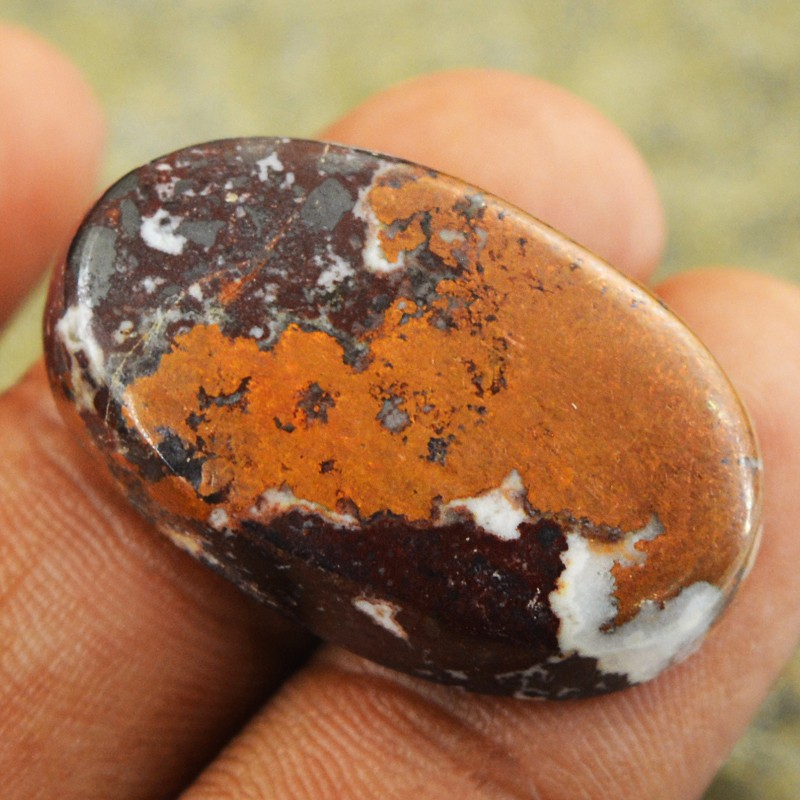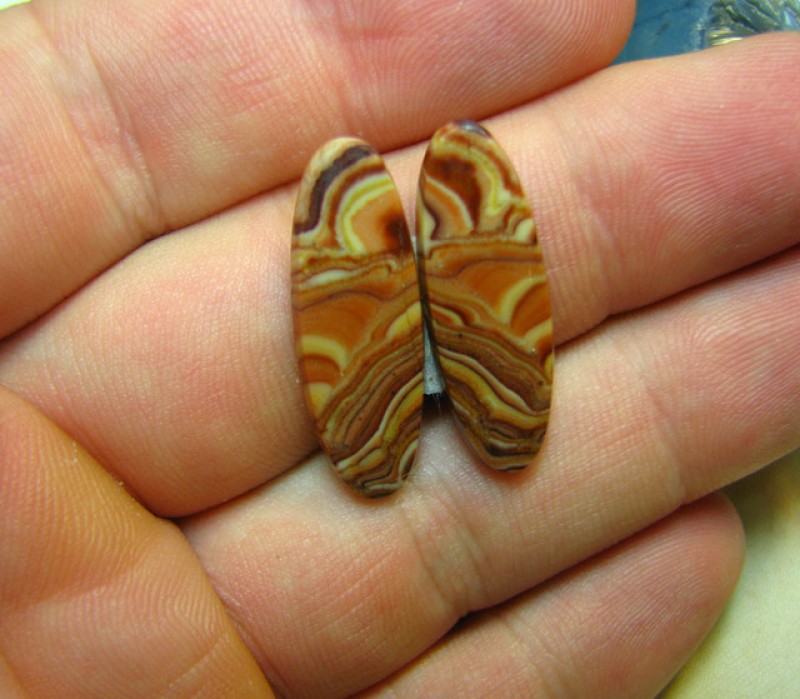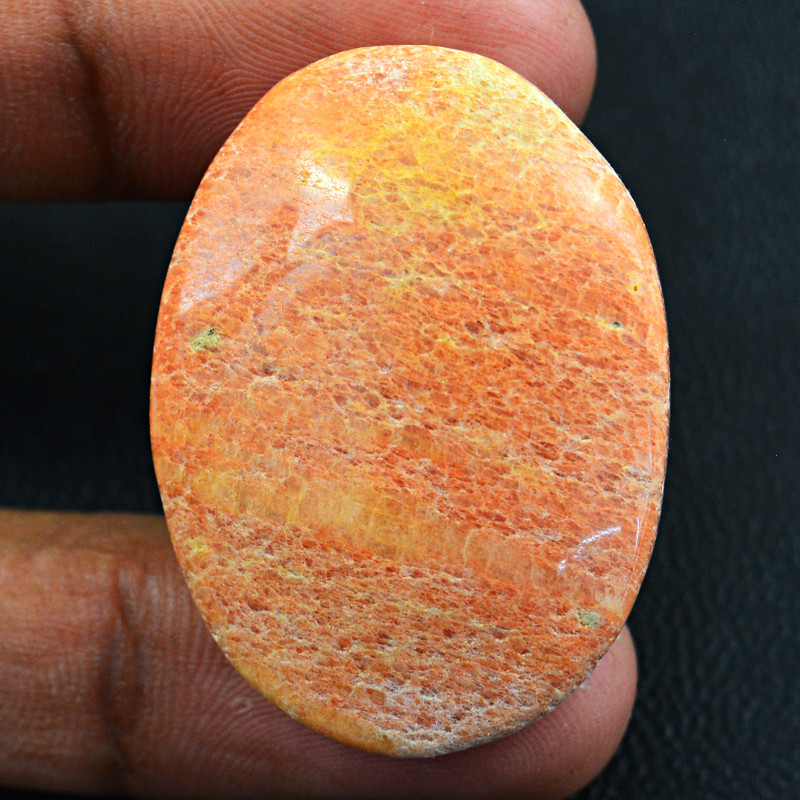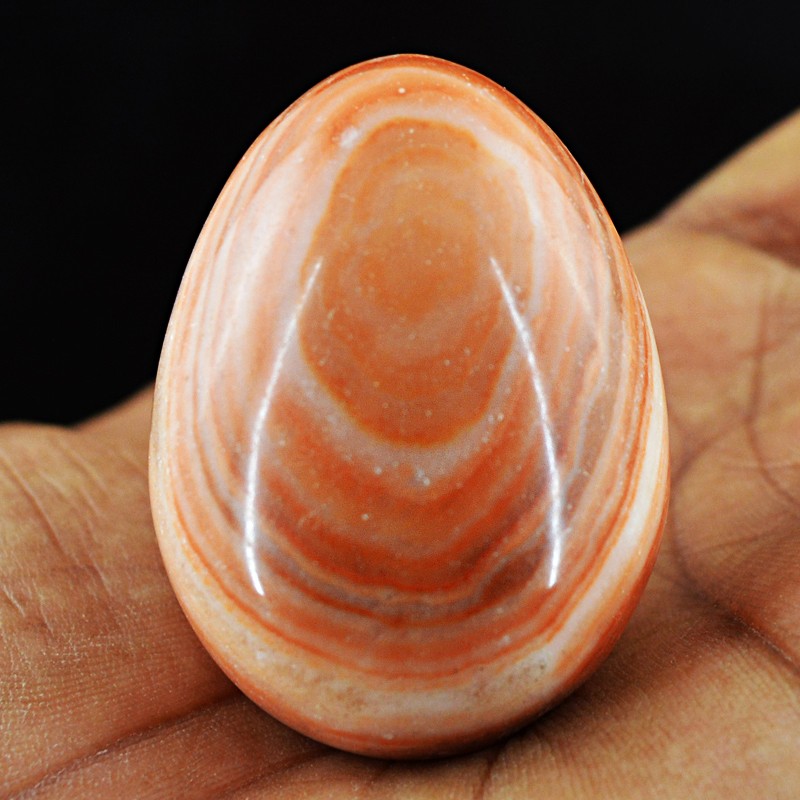
Dolomit-Edelstein: Eigenschaften, Bedeutungen, Wert und mehr
 Dolomit ist ein farbloses, hellbraunes oder rosafarbenes Mineral, das für seine ungewöhnlichen sattelförmigen Kristallcluster bekannt ist. Ist Dolomit ein Edelstein ? Absolut! Allerdings ist er eher als Sammlerstück beliebt.
Dolomit ist ein farbloses, hellbraunes oder rosafarbenes Mineral, das für seine ungewöhnlichen sattelförmigen Kristallcluster bekannt ist. Ist Dolomit ein Edelstein ? Absolut! Allerdings ist er eher als Sammlerstück beliebt.
Sie sollten wissen, dass sich „Dolomit“ sowohl auf das Mineral Dolomit als auch auf das Dolomitgestein bezieht. Das Gestein wird auch Dolomitstein genannt, manche nennen es aber immer noch „Dolomit“. Keine Sorge – wir nennen das Mineral nur „Dolomit“ und das Gestein „Dolomitstein“.
Was macht Dolomit so einzigartig? Wir beantworten diese Frage heute und vertiefen uns in die Eigenschaften, Sorten, Verwendungsmöglichkeiten und vieles mehr von Dolomit-Edelsteinen!

Über Dolomitstein
Dolomit ist ein beliebtes Mineral , das seinen Namen mit den italienischen Dolomiten teilt. Neben Dolomitstein ist Dolomit auch ein wesentlicher Bestandteil anderer Edelsteine wie Tiffany-Stein und synthetischem Opalit .
Dolomiteinschlüsse finden sich in Edelsteinen wie Smaragden und Rubinen , häufiger jedoch in Quarz . Dolomitperlen werden sogar zur Perlenzucht verwendet!
Dolomit wird nicht nur als Edelstein verwendet, sondern auch in zahlreichen anderen Branchen.
Hier erfahren Sie, wofür Dolomit verwendet wird:
Stabilisierendes Glas
Bereitstellung von Magnesia
Teilchen erforschen
Wiederherstellen von Streams
Astrologisch gesehen ist Dolomit ein Sternzeichenstein für den Widder. Gefärbter Dolomit ähnelt Türkis und kann diesen traditionellen Geburtsstein für Dezember ersetzen.

Dolomite Spezifikationen & Eigenschaften
Das Mineral Dolomit ist ein Calcium-Magnesium-Carbonat mit der Formel CaMg(CO3)2. Häufige weitere Elemente sind Mangan, Zirkonium, Eisen, Blei und Kobalt.
Das Gestein Dolomit ist ein sedimentäres Karbonatgestein, das zu über 50 Prozent aus Dolomit besteht. Dolomit kommt in Form von Kristallen, Kristallclustern oder Massen vor, die eine höhere Haltbarkeit aufweisen.
Hier sind alle Eigenschaften von Dolomitkristallen:
Mohshärte : 3,5–4 – variiert je nach Kristallrichtung
Farbe : Farblos, weiß, grau, rosa oder hellbraun, sehr selten hellblau (Dolomit); Hellbraun, braun, weiß oder grau (Ankerit); Rosa, weiß oder hellbraun (Kutnohorit)
Kristallstruktur : Trigonal
Glanz : Glasartig bis perlmuttartig (Dolomit und Ankerit); Subglasartig, harzartig oder matt (Kutnohorit)
Transparenz : Durchsichtig bis durchscheinend (Kristalle); Durchscheinend bis undurchsichtig (Massen)
Brechungsindex : 1,50–1,68 (Dolomit); 1,51-1,75 (Ankerit); 1,52-1,73 (Kutnohorit)
Dichte : 2,84–2,93 (Dolomit); 2,93–3,10 (Ankerit); 3.10-3.12 (Kutnohorit)
Spaltbarkeit : Perfekte 3-Richtung (Dolomit); Perfekte 1-Richtung auf [1011] (Ankerit und Kutnohorit)
Bruch : muschelförmig (Dolomit); submuschelförmig (Ankerit und Kutnohorit)
Streifen : Weiß
Lumineszenz : Manchmal Tribolumineszenz (durch Reibung hervorgerufenes Leuchten); Manchmal Fluoreszenz – Mangano-Dolomit – hellrosa bis leuchtend rot im mittelstarken UV und mäßigen UV; Dolomit – weiß, blau, hellgrün oder orange im mittelstarken UV und weiß, blau, hellgrün oder hellbraun im mittelstarken UV
Was hat es mit den oben erwähnten „Ankerit“ und „Kutnohorit“ auf sich? Wir erklären es Ihnen gleich!

Arten von Dolomit
Dolomit hat sieben Varietäten, die wir im Folgenden vorstellen. Vier davon sind weniger Varietäten als vielmehr Varianten, d. h. sie unterscheiden sich nur geringfügig, nicht deutlich genug, um eine eigene Varietät zu rechtfertigen:
Kupferdolomit : Hellgrüne Variante mit Cuprit
Kobaltdolomit : Seltene, leuchtend rosa bis fuchsiafarbene Variante mit Kobalt
Mangano-Dolomit : Rosafarbene Variante mit Mangan
Ferroischer Dolomit : Rosarote bis braune Variante, die Eisen(II)-oxid (Fe2+) enthält, jedoch weniger Eisen als Magnesium
Die nächsten „Varietäten“ gehören zur Dolomitreihe. Das bedeutet im Allgemeinen, dass sie die gleiche Kristallstruktur aufweisen, aber ein Element in ihrer Formel geändert ist:
Ankerit : Typischerweise hellbraun bis braun (kann weiß oder grau sein), durchscheinender bis transparenter Typ, der Eisen und Mangan enthält, mit mehr Eisen als Magnesium
Kutnohorit : Seltener, manganreicher, üblicherweise rosafarbener (kann weiß oder hellbraun sein) und durchscheinender Typ
Minrecordit : Sehr seltener, durchscheinender weißer oder farbloser Typ, der Zink und Kalzium enthält
 Abbildung oben: Wellendolomit
Abbildung oben: Wellendolomit
Dolomit-Sorten
Dolomit wird auch als Edelstein verwendet, daher ist es wichtig, die Dolomitarten zu kennen:
Kaimanit : Weiße, rote oder schwarze Variante der Kaimaninseln, manchmal mit orangen, braunen und grauen Farbbändern
Kona-Dolomit : Uralte rosa bis rote Sorte mit blaugrünen versteinerten Algen (Stromatolithen), oft mit gelben, orangen, braunen, grauen und weißen Mustern
Wellendolomit : Auch Rolling Hills-Dolomit genannt, eine Art Kona-Dolomit mit gewellten Bändern in Orange-, Braun- und Rottönen
Kaimanit ist mit 5-7 auf der Mohs-Skala härter als alle genannten Sorten (einschließlich Dolomit).
Das war's zu den Sorten, aber was bedeutet Dolomitstein?

Bedeutung und Geschichte des Dolomit-Edelsteins
Dolomit symbolisiert Geborgenheit, Ausgeglichenheit und emotionale Stärke. Es ist ein Symbol der Dolomiten-Folklore, insbesondere der Legenden der Ladiner. Die bedeutendste ladinische Erzählung ist das Nationalepos vom matriarchalischen „Königreich der Fanes“.
Kurz gesagt erzählt die Legende von den ersten Ladinern, einer matrilinearen Volksgemeinschaft namens Fanes. Sie blühten über Generationen hinweg unter der Herrschaft der Königin.
Ihr Untergang kam, als der neue König aus Habgier Kriege führte und sein Volk verriet, um Zugang zu Aurona , einem „Land des Überflusses“, zu erhalten.
Der König wurde zu Stein und die verbliebenen Fanes zogen sich in die Berge zurück. Es heißt, ihr Königreich werde wiedergeboren, sobald silberne Trompeten erklingen.

Geschichte
Der Name des Dolomitminerals, des Dolomitgesteins und der Gebirges ist eine Hommage an den französischen Mineralogen Déodat de Dolomieu.
Dolomieu beschrieb Dolomitgestein (Dolostein) 1791, nachdem er es in den Tiroler Alpen (den heutigen Dolomiten) gefunden hatte. Der Schweizer Chemiker Nicolas-Théodore de Saussure wählte den Namen 1792.
Saussure bestätigte jedoch auch, dass Dolomieu nicht der erste war, der Dolomit beschrieb. Die Erstbeschreibung stammte vielmehr vom schwedischen Botaniker Carl Linnaeus im Jahr 1768, der ihn Marmor tardum, also „langsamer Marmor“, nannte.
Eine weitere Beschreibung stammte 1778 vom österreichischen Naturforscher Belsazar Hacquet, der den Stein Lapis suillus oder „Stinkstein“ nannte.
Glücklicherweise kam es zwischen den Männern zu keinen Feindseligkeiten. Als Dolomieu 1784 in Slowenien mit Hacquet zusammentraf, stellte dieser klar, dass Linnés Beschreibung seiner eigenen vorausging. Hacquet präzisierte dies sogar im zweiten Band seines 1781 erschienenen Buches.
Im 20. Jahrhundert schlugen Geologen „Dolostein“ als alternative Bezeichnung für Dolomitgestein vor, um es vom Mineral zu unterscheiden. Da „Dolomit“ jedoch zunächst für das Gestein stand, waren sich viele Geologen mit der Änderung nicht einig. Tatsächlich bezeichnete das American Geological Institute den Namen Dolomit in seinem Glossar von 2017 als „veraltet“.
Von der Geschichte zur Heilung: Wofür ist Dolomitstein gut?

Heilende Eigenschaften von Dolomitkristallen
Sowohl Dolomit als auch Dolomitstein können als kraftvolle Heilsteine mit ähnlichen Fähigkeiten fungieren.
Die heilenden Eigenschaften von rosa Dolomit entsprechen denen anderer rosa Edelsteine und fördern Liebe, Akzeptanz und Vergebung. Wenig überraschend sind sie auch hervorragende Chakra-Steine für das Herzchakra!
Ebenso wie andere weiße Kristalle können weiße Dolomite die Konzentration verbessern, die Spiritualität steigern und den Körper entgiften.
Wie verwenden Sie Dolomitstein bei spezifischeren körperlichen und emotionalen Beschwerden?
Körperliche Heilung
Kristallheiler verwenden Dolomit für:
Stärkung der Knochen
Erhöhung der Sauerstoffversorgung des Blutes
Linderung des prämenstruellen Syndroms
Verbesserung der Ausdauer
Emotionale Heilung
Zu den emotionalen Vorteilen von Dolomitstein gehören angeblich die Vertreibung negativer Gedanken, der Ausgleich chaotischer Emotionen und die Förderung spiritueller Verbindungen.
Kobaltdolomit wird auch gerne zur Behandlung tiefer emotionaler Wunden verwendet. Er hilft Ihnen, die Unannehmlichkeiten der Wundverarbeitung zu bewältigen und dann Ihre eigene Kraft zu finden, um weiterzumachen.
Ist Dolomit über spirituelle Zwecke hinaus wertvoll? Sicher! Wir werden als Nächstes auf seine Wertfaktoren eingehen.

Eigenschaften von Dolomit-Edelsteinen
Da Dolomit seltener als Schmuck verwendet wird, ist seine Wertbestimmung nicht so standardisiert wie bei anderen Edelsteinen. Die Kategorien sind jedoch ähnlich: Farbe, Schliff, Transparenz, Karatgewicht und Behandlungen.
Farbe
Die Farbe von Dolomitkristallen ist üblicherweise ein blasser Grau-, Weiß-, Gelbbraun-, Rosa- oder Blauton. Die Masse ist meist weiß, grau oder hellbraun.
Die Farbmuster von Dolomitstein entstehen durch die geschichtete Struktur verschiedener Mineralien und Verunreinigungen. Im Laufe der Zeit verfärben sich die meisten Dolomitsteine durch Eisen und Witterungseinflüsse matt gelblich-braun.
Schneiden
Perfekte Spaltbarkeit und unterschiedliche Weichheit machen das Schleifen von Dolomit schwierig. Dennoch schaffen einige erfahrene Edelsteinschleifer wunderschöne facettierte Dolomite.
Dolomitkristalle werden üblicherweise in Rohform verkauft. Rosa Kutnohorit-Cluster können faszinierende, konische Formen bilden, die an abgerundete Staubwedel erinnern. Ankerit und massiver Dolomit werden gelegentlich facettiert oder als Cabochon geschliffen.
Dolomitmassen und Dolomitsteine sind haltbarer und eignen sich perfekt für Schnitzereien, Perlen und Cabochons. Sie sind etwas wertvoller als Dolomitkristalle.
Transparenz
Kristalle oder massive Materialien mit guter Transparenz oder interessanten Einschlüssen können einen hohen Wert haben.
Karatgewicht
Rohkristallcluster können groß sein, und Dolomitmassen können riesige Schnitzereien ergeben. Der Fundort kann bei der Größe eine Rolle spielen – facettierte Dolomite aus New Mexico haben nur 5 Karat erreicht, während facettierte Dolomitsteine aus Spanien über 100 Karat wiegen.
Behandlungen und Simulanzien
Wie Howlith kann Dolomit gefärbt werden, um Türkis oder Lapislazuli zu imitieren. Gefärbter Dolomitmarmor kann als Jade-Imitat verkauft werden, genannt „Bergjade“.

Dolomitbildung und -quellen
Zur Entstehung von Dolomit gibt es verschiedene Theorien, der am meisten diskutierte Prozess ist jedoch die Dolomitisierung.
Die Dolomitisierung beginnt mit Kalzit , einem weiteren Kalziumkarbonat. Wenn Meer- oder Salzwasser verdunstet, häufig in küstennahen Salzwiesen, spaltet sich Magnesium ab. Dieses Magnesium ersetzt das Kalzium im Kalzit und wandelt es in Dolomit um.
Bergleute finden die meisten Dolomite in metamorphen Gesteinen, Geoden , Dolomitmarmor und Talkgestein .
Wo kommt Dolomit vor?
Bergbaustandorte
Dolomiten gibt es weltweit in Hülle und Fülle. Spanien ist für seine hochwertigen, transparenten Kristalle und Cluster bekannt. Kolumbien ist die einzige bekannte Quelle hellblauer Dolomite.
Weitere Primärquellen sind:
Brasilien
Kanada
China
Tschechien (Kobaltoan, Kutnohorit)
Demokratische Republik Kongo (Kobalt)
Italien (Kutnohorit)
Japan (Kutnohorit)
Mexiko (Wellendolomit)
Marokko (Kobalt)
Namibia (Kobalt, Kupfer)
Südafrika (Kutnohorit)
Schweiz
Tasmanien (Ankerit)
USA – Kansas, Missouri, New Mexico (transparent), New Jersey (Kutnohorit), Oklahoma
Ist Dolomit teuer? Nein, er ist erschwinglich!

Dolomiten Preis & Wert
Dolomitsteine sind aufgrund ihrer längeren Haltbarkeit etwas teurer als Dolomite.
Wellenförmige Dolomit-Cabochons, oft als „Dolomit-Jaspis“ bezeichnet, kosten zwischen 0,10 und 2,50 US-Dollar pro Karat. Schnitzereien kosten zwischen 0,02 und 0,40 US-Dollar pro Karat.
Wie viel ist Dolomit wert? Dolomit-Cabochons kosten im Großhandel etwa 0,04 $ pro Karat. Rohe Dolomit- oder Ankerit-Exemplare kosten 0,02 bis 0,30 $ pro Karat.
Anhänger oder Ringe aus Dolomit kosten 3 bis 4 US-Dollar. Zusätzliche Materialien können jedoch zu Preisen zwischen 30 und 70 US-Dollar führen. Facettenschliff-Dolomit-Edelsteine kosten 20 bis 30 US-Dollar pro Karat.
Pflege und Wartung von Dolomit
Der erste Schritt bei der Edelsteinpflege ist die Wahl einer weniger anfälligen Option. Da Dolomit anfällig für Beschädigungen ist, sind Anhänger oder Ohrringe am sichersten. Für Ringe empfehlen wir Schutzfassungen .
Bewahren Sie Dolomit getrennt von anderen Edelsteinen in einem Stoffbeutel auf. Mischen Sie zur Reinigung einfach warmes Wasser mit milder Seife, tauchen Sie eine weiche Bürste in die Mischung und schrubben Sie den Stein vorsichtig. Trocknen Sie ihn anschließend mit einem Mikrofasertuch ab. Vermeiden Sie aggressive Chemikalien und hohe Hitze.

Erfreuen Sie sich an der Landschaft der Dolomiten!
Sowohl Dolomit als auch Dolomitstein sind wunderschöne Geschenke der Natur. Das Tragen von Dolomit vermittelt die Freude und das Gefühl, in den Dolomiten zu sein – ganz ohne Flugkosten!
Lust auf einen schönen, erdigen Stein? Kaufen Sie noch heute Dolomit-Edelsteine!
Suche nach Gemstone Encyclopedia
Verwandte Auktionen
In Verbindung stehende Artikel
Russland ist ein riesiges Land mit unermesslichen Mineral- und Edelsteinreserven. Russland hat sich zu einem bedeutenden Diamantenproduzenten und -produzenten entwickelt.
9th May 2018
Werfen wir einen Blick auf die 10 größten Diamanten, die je gefunden wurden. Sie werden nie erraten, wie groß der Diamant ist, der den ersten Platz belegt.
9th May 2018
Asien ist eine Region der Erde, die einige der außergewöhnlichsten Edelsteine hervorbringt. Rubin, Saphir und Spinell stammen alle aus dieser Region.
9th May 2018
Neue Artikel
Schnitzereien aus Palmenelfenbein, auch pflanzliches Elfenbein genannt, sind eine natürliche Alternative zu Elefantenelfenbein und werden ethisch vertretbar aus den Nüssen der südamerikanischen Phytelephas-Palme gewonnen. Erfahren Sie in diesem Ratgeber alles Wissenswerte über Palmenelfenbein!
15th Jan 2026
Chrysanthemenblütensteine sind Naturwunder mit einem weißen Kalzit-, Celestin- oder Andalusit-Blumenmuster, das sich vom schwarzen Kalkstein oder Tonstein abhebt.
13th Jan 2026
Der Regenbogen-Gitter-Sonnenstein ist eine Feldspatvarietät mit drei wunderschönen optischen Effekten, die durch verschiedene Einschlüsse hervorgerufen werden. Sein feuriges Farbenspiel und das Gittermuster machen ihn zu einem seltenen Sammlerstück!
12th Jan 2026
Artikelkategorien
How To's is where you will find helpful articles from gem Rock Auctions on how to cut gemstones, select gemstones and buy gemstones.
9 Artikel




